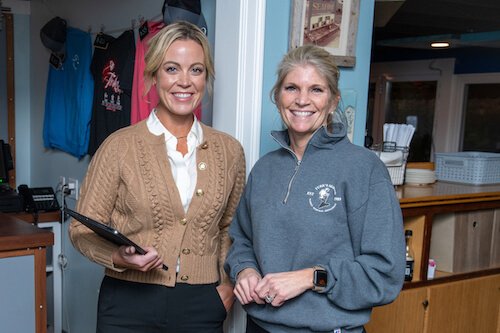Why Unified Ordering & Delivery Integration Is a Game Changer for Restaurant POS Systems
As diners increasingly expect seamless online ordering, delivery, and dine-in experiences, restaurants must adapt. One of the most powerful upgrades a restaurant can make is ensuring that its POS system integrates ordering and delivery channels into a unified workflow. This approach reduces errors, improves kitchen efficiency, and preserves profit margins.
In this post, we’ll explore how unified ordering integration works, why it matters in 2025, challenges to look out for, and how a modern restaurant POS system can support it. (For general context on restaurant POS systems, be sure to check out our Restaurant POS Systems page.)
What Is Unified Ordering & Delivery Integration?
Unified ordering integration means that all customer orders—whether placed in-house, via your website, via a mobile app, or through a third-party delivery service—flow into your restaurant’s POS/KDS as a single, consolidated stream. Rather than treating online orders and third-party delivery orders as separate systems (often entered manually or via another tablet), the POS handles them like any in-house order.
Key capabilities typically include:
-
Automatic syncing of menus across delivery platforms and your website
-
Direct transmission of orders into kitchen display systems (KDS) or printers
-
Real-time updates of item availability, modifiers, and pricing
-
Centralized reporting and analytics across all channels
-
Support for commission-free direct online ordering to reduce third-party fees
Many POS vendors now advertise this as a must-have feature. According to a 2025 trends survey, one of the top demands is the ability to manage dine-in, pick-up, and delivery from a single interface without manual re-entry.
Why It Matters Now — The Business Case
Error reduction & faster fulfillment
When orders are retyped into separate systems or manually copied, mistakes happen: wrong items, missed modifiers, double entries, etc. Direct integration reduces that risk and speeds order flow to the kitchen.
Operational efficiency during peak times
During lunch and dinner rushes, staff juggling multiple tablets or systems slow down service. A unified POS helps maintain consistency and frees staff to focus on hospitality.
Preserves margins by lowering commissions
When customers place orders via your own website/app, orders avoid third-party delivery commissions (typically 15–30 percent). Many POS systems now support commission-free direct ordering—you control price, data, and fees.
Data unification for better insights
Combining all revenue streams into one analytics dashboard gives you clear visibility into what’s selling, when demand spikes, and how each channel performs. In a 2024 industry survey, 60 percent of restaurant operators reported using POS data to power loyalty programs and tailored promotions.
Future-proofing for scale & multi-location
Single-interface ordering scales better. As you expand to multiple locations or integrate more channels (kiosk, QR ordering), the integrated POS aids consistency and reduces fragmentation.
Challenges & Pitfalls to Watch Out For
While integration brings big advantages, there are some challenges:
-
Menu synchronization quirks
Keeping menus, modifiers, availability, and pricing synced across multiple platforms can be complex. Mistakes (e.g. items shown on delivery apps but sold out) frustrate customers. -
Latency/delay between systems
Integration may add a small delay between when customers place orders and when kitchen staff see them. Choose systems with low latency and strong APIs. -
Third-party API restrictions & changes
Delivery platforms sometimes change their APIs or commission structure, which can break integrations or require rework. -
Data ownership and analytics complexity
Some delivery platforms retain data or restrict access to detailed analytics. A unified POS helps centralize data, but you must verify what data is accessible. -
Cost & technical setup
Integration may involve setup costs, middleware, or custom development, so assess total cost of ownership.
What to Look for in a POS That Supports Unified Ordering
When evaluating POS systems, make sure they:
-
Offer native or close partnership integrations with popular delivery platforms (DoorDash, Uber Eats, Grubhub, etc.).
-
Allow direct online ordering through your own website/app without extra middleware or third-party commissions.
-
Stream orders seamlessly into KDS / kitchen printers with clear mapping to prep stations.
-
Support real-time inventory synchronization across all platforms (so you don’t sell items that are out of stock).
-
Give you channel-level reporting and analytics (you want to compare dine-in vs delivery vs pickup).
-
Maintain low-latency, reliable APIs and strong uptime guarantees.
Many restaurant POS systems today already advertise these features. In 2025, according to Hospitality Technology, vendors expect continued investment in guest ordering platforms (web, mobile, kiosk) and deeper API integration. Hospitality Tech
Example Scenario: How Integration Helps in Practice
Imagine a mid-size casual eatery that takes orders from three sources: walk-in, website pick-up orders, and third-party delivery. Before integration, the staff had to:
-
Monitor delivery platform devices for new orders
-
Manually re-enter those orders into their POS
-
Watch inventory manually to avoid overselling
-
Pull reports separately from each platform
With a unified ordering POS, when a delivery order arrives, it directly appears in the POS’s order flow, inventory updates real-time, the kitchen sees the order just like any dine-in ticket, and your dashboard reports reflect the combined revenue. The time saved, errors eliminated, and insights gained more than justify the upgrade.
How This Ties Back to Your Restaurant POS Investment
Your choice of POS system should be evaluated not just on features, but on how well it supports unified ordering and delivery. Systems that fragment your ordering channels are costly to manage and frustrate staff and guests. The best restaurant POS systems for 2025 embed ordering, analytics, inventory, and payments into one coherent platform.
Ready to explore options designed specifically for restaurants? Check out our detailed guide on Restaurant POS Systems.
If you’d like help auditing your current ordering workflow or assessing POS options that support clean integration, we’d be glad to assist.
Small Business
Education & Inspiration
Preparing for the Holiday Season: How to Optimize Your Payment and POS Setup for Peak Volume
The holiday season brings a surge in customer traffic, higher transaction...
How Restaurants Can Save Big with Smarter POS Systems and Dual Pricing
In today’s competitive restaurant landscape, every dollar counts. Rising...
Merchant Spotlight: New England House of Pizza – Hyannis, MA
New England House of Pizza – Hyannis, MA For over 40 years, New England...

Speak with one of our LOCAL consultants
Set up a time to speak and meet with one of our local Certified Payment Professionals for a complimentary consultation.



